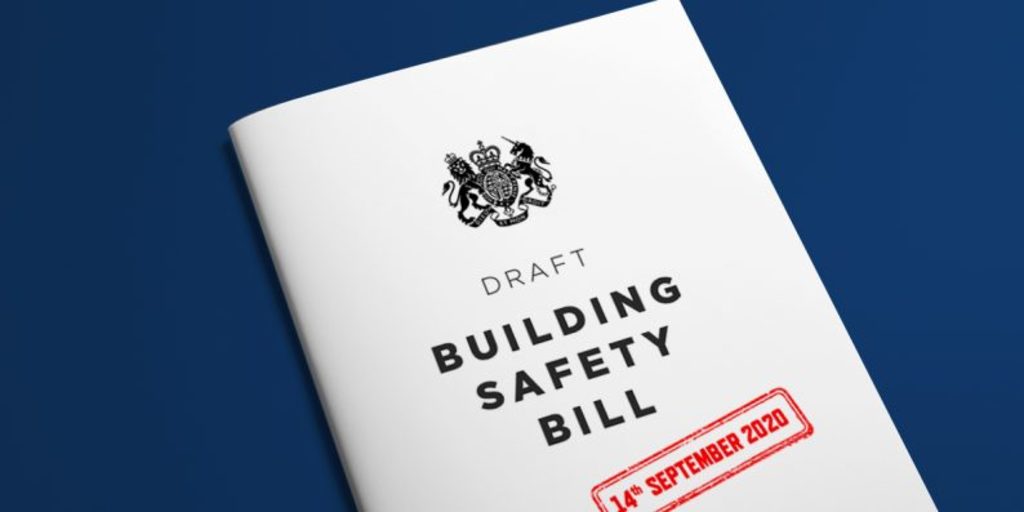The much-debated Building Safety Bill, first introduced in 2021, has now been passed as the Building Safety Act – causing the biggest shakeup in the building industry for several decades.
Developing new buildings requires a lot of work even before you take government regulations into account, which bring even more paperwork, checklists, and authorisation requirements to the table.
If you’re involved with designing, constructing, selling, or buying new properties, then you’ll want to stay on top of the regulatory changes invoked by the Building Safety Act. We’ll explain the basics of the new laws in this blog, so you can get up to speed with what to expect and how you can comply.
Who does the Building Safety Act apply to?
The Building Safety Act applies to owners of buildings and most, if not all, roles in the building industry. This includes those who commission construction work and participate in the processes of design and construction. It mostly applies in England and Wales, though some sections apply to Scotland and Northern Ireland as well.
While parts of the Building Safety Act are concerned with residential buildings, or the construction of buildings as a whole, the primary focus is improving high-risk buildings (HRB). These are generally defined as high-rise residential buildings that are a minimum of 7 storeys or 18 metres high – e.g. hospitals, student accommodation, and care homes.
The Act aims to clarify building safety responsibilities at every stage for the life cycle of a HRB, creating and continuing a ‘golden thread’ of important information so that nothing is overlooked by any party at any point. This means keeping thorough mandated records of structural safety and fire safety measures, including up-to-date maintenance.
What are the new building safety measures?
The Building Safety Act splits a building’s life-cycle into three gateways – planning and design, construction, and occupation. The owner must provide evidence that all safety regulations have been met at each stage, with a new Building Safety Regulator (BSR) monitoring compliance.
This duty-holder regime is based on the principle that the individual or entity that creates a safety risk should also be responsible for managing it. The BSR can request documents at any time, and if they discover a problem, they’ll have significant powers to prevent works from proceeding.
Under the Defective Premises Act, any parties undertaking work on a residential building were previously required to make sure it was fit for habitation, or owners and leaseholders could bring claims against them for damages. The limitation period for such claims is now being extended through the Building Safety Act, up to 15 years for new builds and 30 years retrospectively.
The Act requires a ‘golden thread’ collating information on compliance and management of the building, which is not only accessible to the owner and contractors but also to residents and emergency services. For high-risk buildings in the occupation stage, there will also be a Principle Accountable Person and other Accountable Person(s) to engage with residents about safety.
A new Construction Products Standard Committee is also being formed to advise on regulatory standards for product testing and usage in the construction industry, with a national Construction Products Regulator. There’ll also be a New Homes Ombudsman, and further frameworks for both sector-specific and industry-wide regulations for the designing and constructing of new buildings.
When does the Building Safety Act come into force?
Most of the specified provisions in the Building Safety Act already came into practical effect on 28th June 2022. The measures already in legal force as of this date include:
- New retrospective limitation period for claims under the Defective Premises Act (30 years)
- New grounds for claims against construction product manufacturers, marketers, and distributors, including cladding manufacturers, who fail to comply with regulations
- Changes to leaseholder liability for remediation costs associated with fire safety defects
Otherwise, the Act in its current state is more of a framework for further legislation following the Act’s recommendations. This secondary legislation will take time to finalise, and though the Secretary of State is yet to set concrete dates for any of this, it’s expected to roll out gradually over the next 12 to 18 months. The government will publish more official guidance as it’s required.
What should you be doing to comply?
Depending on your role related to this industry, these are the things you should be focusing on:
- House builders – proposed building safety levy, new building industry schemes, prohibited situations for getting planning permissions and building control approvals, new building liability orders, changes to the DPA, changes to warranties, the New Homes Ombudsman
- Commercial developers – shorter building regulation approval times, possible civil claims for breaching regulations, changes to approved inspections and sanctions, introduction of the new dutyholder regime, upgraded competency requirements
- High-rise residential developers – proposed regime applying to these developments (the gateway system and ‘golden thread’), dutyholder obligations for both construction and management of high-rise residential buildings
- Approved inspectors – updates to the approved inspector regime, including the introduction of a new building inspector role
- Architects – changes to professional development, fees payable, and disciplinary proceedings for the Architects Registration Board
- Insurers – providers of professional indemnity insurance and latent defects insurance will be affected by the extended limited periods under the DPA
Everyone involved with creating buildings in any way will be affected by the Building Safety Act in some way, so it’s best to get to grips with it now and stay on top of updates as they continue to happen. If you’re a property developer, these are the things you should already be doing to comply:
- Adhering to current government-mandated building regulations
- Securing site insurance for the development site at all stages
- Setting up a building warranty to cover latent structural defects
- Keeping thorough records of contracts, technical audits, and insurance polices
In summary, anyone involved with new housing in the UK should be on high alert for ongoing changes to building safety laws and regulatory bodies – for your own sake, and your clients’.

















